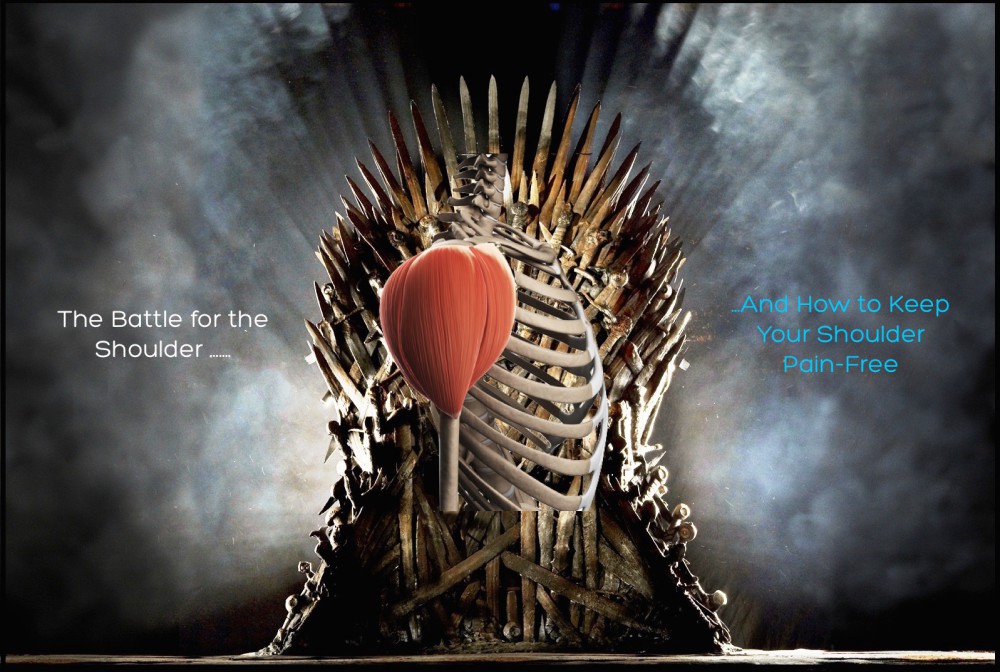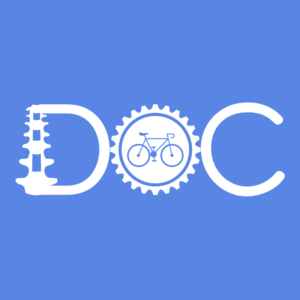A battle is being waged in the shoulder of thousands of gym goers throughout the world and most of us do not even know it. If you do a lot of chest work, this war might be being fought in your very own shoulder. Just made you look at your shoulder didn’t I.
Like a great episode of Game of Thrones, two opposing sides are battling with not much more than shear strength over an unstable battlefield so that they have the control that they want.

On one side, you had the forces of The Front, made up of the pecs, biceps, teres major, subscapularis and the latissimus dorsi. Opposing the forces of The Front, you have the severely underpowered, and undermanned infraspinatus, teres minor and posterior deltoid representing The Back.
These opposing forces have a firm grasp on the head of the humerus in the glemohumeral joint of the shoulder, and the shoulder can only be happy when these forces are equally balanced. Like a game of tug-of-war, the forces of The Front and Back oppose each other and try to take control of the arm
Enough with the GOT analogy.
Unlike the hip, in which the ball of the femoral head sits very securely in the socket of the hip, the shoulder is a relatively unstable joint. The slightly rounded head of the humerus, sits on the flat glenoid surface of the shoulder-blade. The shoulder joint is only deepened slightly by a fibrocartilage labrum that makes the joint more congruent and stable. The majority of the glenohumeral joint’s stability comes from the static (they cant actively contract) ligaments that run between the humerus and the scapula, and the dynamic (they can contract and adapt to forces quickly) stability provided by the muscles.


With any movement, the shoulder will be most stable and safe when it is centrated; the middle of the humeral head stays in the middle of the glenoid. Centration is the equivalent to ensuring that your tires are on the proper axis of rotation and why we get them rotated – it avoids excess wear.

When perfectly balanced, the stablizers in the front that pull the humeral head forward, are balanced with the those in the back, which pull it posteriorly. The muscles and ligaments will work together to ensure that the shoulder joint will stay centrated whether throwing a ball, reaching overhead, swinging a club or lifting weights. When centrated, it reduces the likelihood of injury and pain that might result from the head of the humerus abutting against the front of the shoulder (joint, ligament, labrum, tendon, muscle).
However, this balance is so difficult to achieve because of our anatomy. The muscles that pull the head of the humerus forward are bigger, more numerous and stronger than the two dinky rotator cuff muscles posteriorly. Furthermore, and something we are all guilty of, we are more likely to spend time working to hypertrophy the big muscle groups like the pecs, lats, anterior deltoid, and biceps instead of building stability in the rotator cuff. This further tilts the balance in favour of The Front causing the arm to repeatedly slide forward in the shoulder with every movement.

With repeated overhead activity, chest, arm or Olympic style lifts , the activation of this dominant Front muscles, glides humeral head forward and often causes sharp anterior shoulder pain. We call this shoulder pain impingement syndrome, in which the anterior pull on the humeral head decreases the already small space available for the tissues of the shoulder to run through. Less space for the arm to move, means more abutment and impingement against the front of the shoulder. Until you give the tissue time to heal and the balance is corrected, it will either continue or come back respectively.
Ensuring that there is balance between the primary movers of The Front, and the rotator cuff muscles of The Back will allow for proper centration of the shoulder and reduce the likelihood of injury
How do I do this? Easy. Check back in for an update later for my power rehab prescription of how to keep the shoulder healthy. Until then, lay off the chest and overhead work or ensure that you are doing as much to strengthen the teres minor, infraspinatus, posterior deltoid, and shoulder retractors (rhomboids, trapezius) . These muscles primarily extend and externally rotate the arm and I find are best targeted with resistant band work. Even with rest the issue will often persist until you correct the dysfunction or have your friendly neighbourhood chiropractor do it for you.
Dr. Alex




